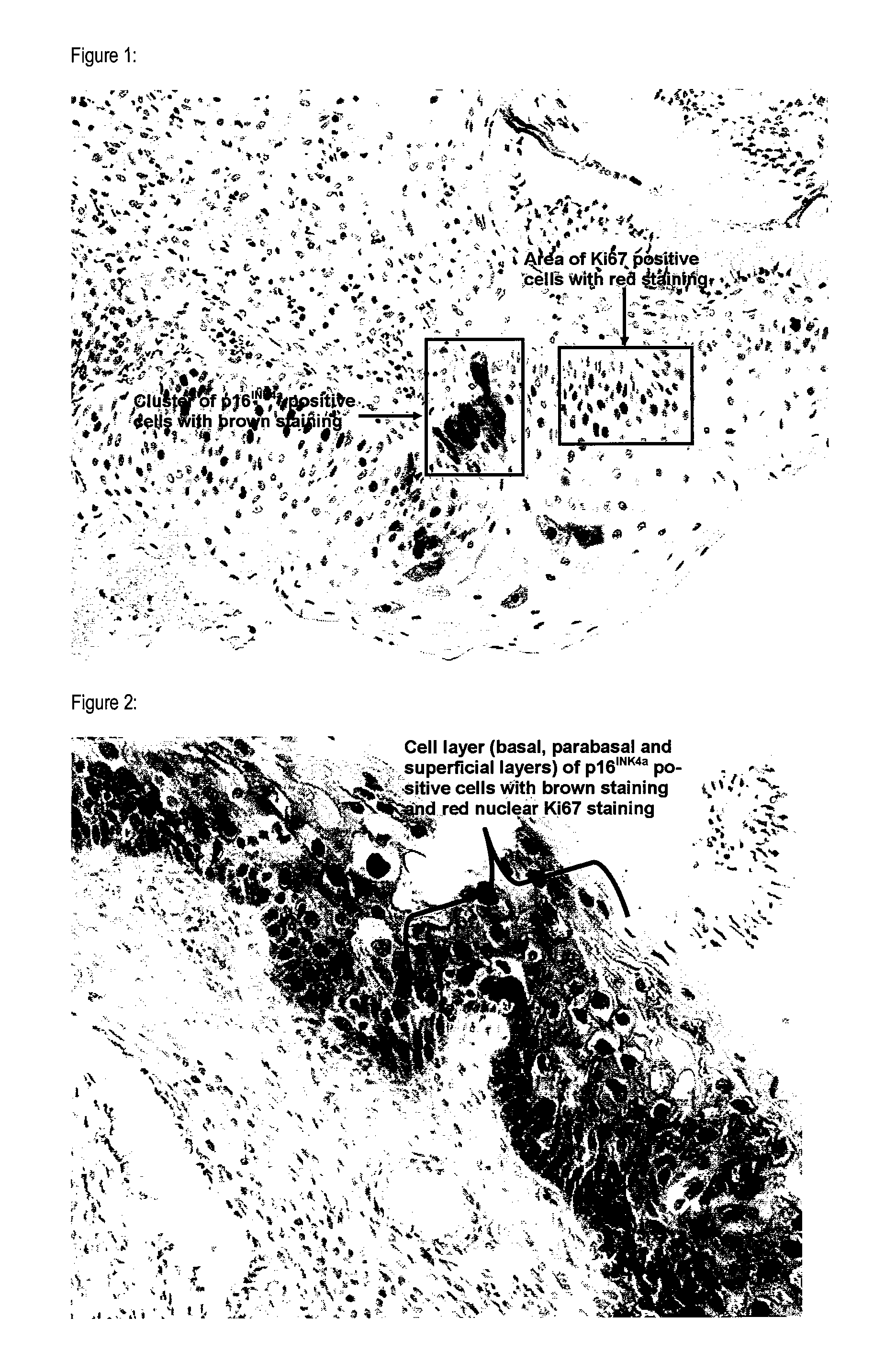Method for prediction of the progression risk of tumors
a tumor progression and tumor technology, applied in the direction of instruments, biochemistry apparatus and processes, material analysis, etc., can solve the problems of difficult to predict which particular lesion is prone to regress and which will progress to invasive cancer, and impose problems on the diagnosing physician and the patien
- Summary
- Abstract
- Description
- Claims
- Application Information
AI Technical Summary
Benefits of technology
Problems solved by technology
Method used
Image
Examples
example 1
Prediction of the Progression Risk of Histological Specimens Obtained from the Cervix Uteri Classified as CIN 1 by Detection of p16INK4a Protein and Ki67 Protein
[0071]Archival histological samples (sections generated from neutral buffered formalin fixed, paraffin embedded punch biopsies) of the cervix uteri were immuno-histochemically stained using antibodies specific for p16INK4a and Ki-67. In total 10 specimens have been stained. Specimens with available follow up data have been chosen. For 6 specimens follow up examinations revealed regression of the CIN 1. For 4 specimens follow up examinations revealed progression of the CIN1 lesions to high grade dysplastic lesions. For all 10 specimens also HPV data were available or were generated during the experiments performed.
[0072]All specimens were treated as follows.
[0073]Tissue blocks were sectioned into slices of 4 μm thickness. Prior to deparaffinization slides have been placed in a drying oven at a temperature of 60° C. for a time...
example 2
Prediction of the Progression Risk in Breast Biopsies by Detection of p16INK4a Protein and Different Cell Proliferation Marker Proteins
[0094]In total 15 archival biopsy specimens of breast tumors (ductal carcinoma in-situ and lobular carcinoma in situ specimens) were used for the present experiment. 10 of the tested specimens were of less aggressive tumors, 5 stem from more aggressive tumor types. Progression risk and aggressiveness of the tumors were proven by follow up data on the individual cases. For each sample five sections were subjected to different double staining experiments. In each experiment p16INK4a staining was combined with one of the following cell proliferation markers: Ki67, MCM2, KiS2, MCM5, topoisomerase-2-alpha.
[0095]Specimen preparation and staining was performed as described above for Example 1.
[0096]Also in this experiment microscopic inspection revealed, that double-staining of single cells was detected only in those specimens that had more aggressive chara...
PUM
| Property | Measurement | Unit |
|---|---|---|
| temperature | aaaaa | aaaaa |
| time | aaaaa | aaaaa |
| fluorescence | aaaaa | aaaaa |
Abstract
Description
Claims
Application Information
 Login to View More
Login to View More - R&D
- Intellectual Property
- Life Sciences
- Materials
- Tech Scout
- Unparalleled Data Quality
- Higher Quality Content
- 60% Fewer Hallucinations
Browse by: Latest US Patents, China's latest patents, Technical Efficacy Thesaurus, Application Domain, Technology Topic, Popular Technical Reports.
© 2025 PatSnap. All rights reserved.Legal|Privacy policy|Modern Slavery Act Transparency Statement|Sitemap|About US| Contact US: help@patsnap.com

